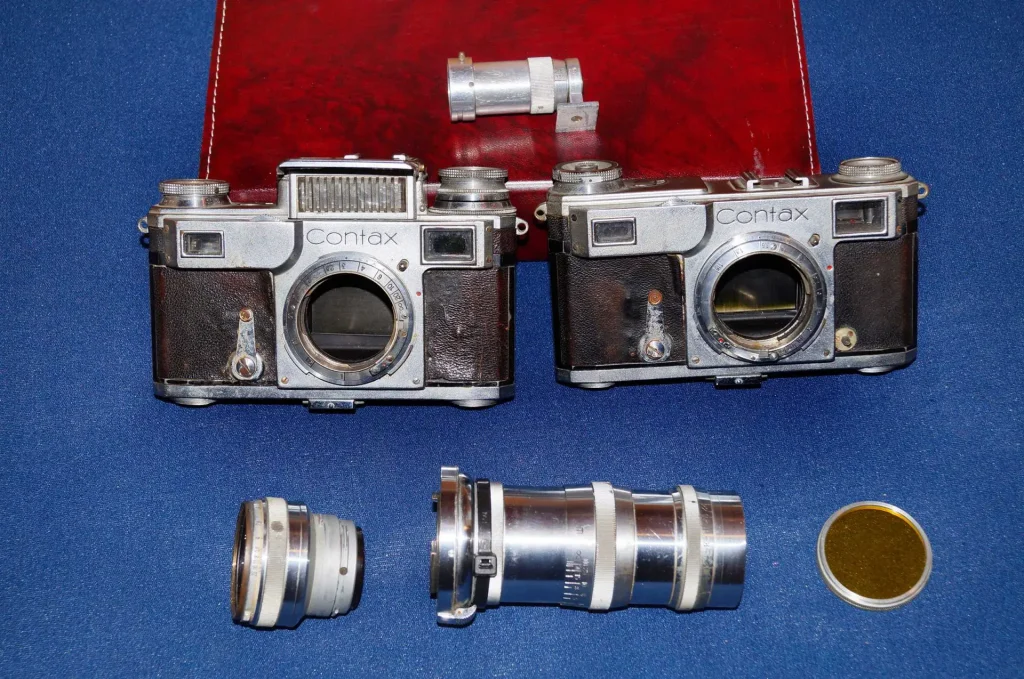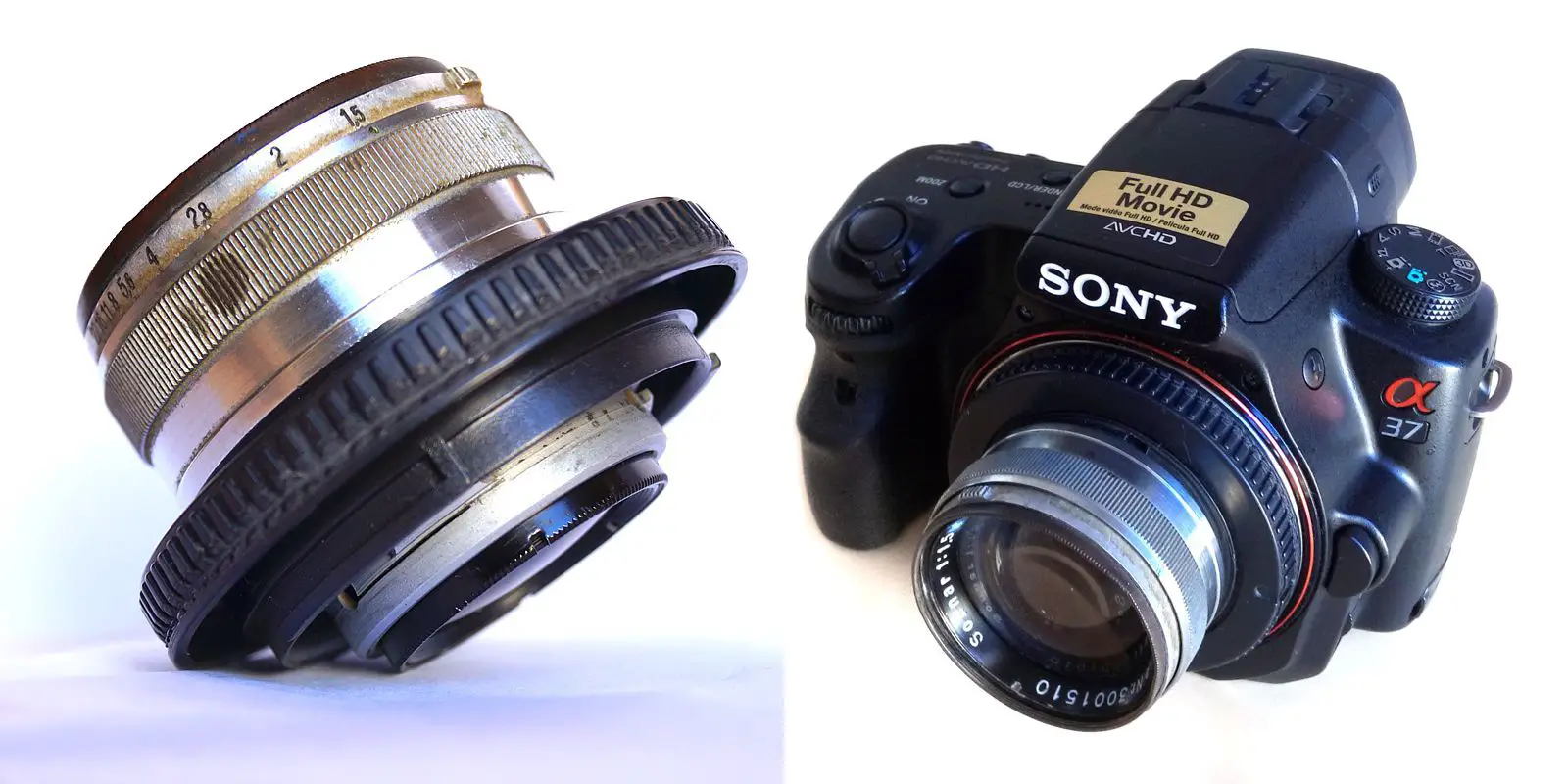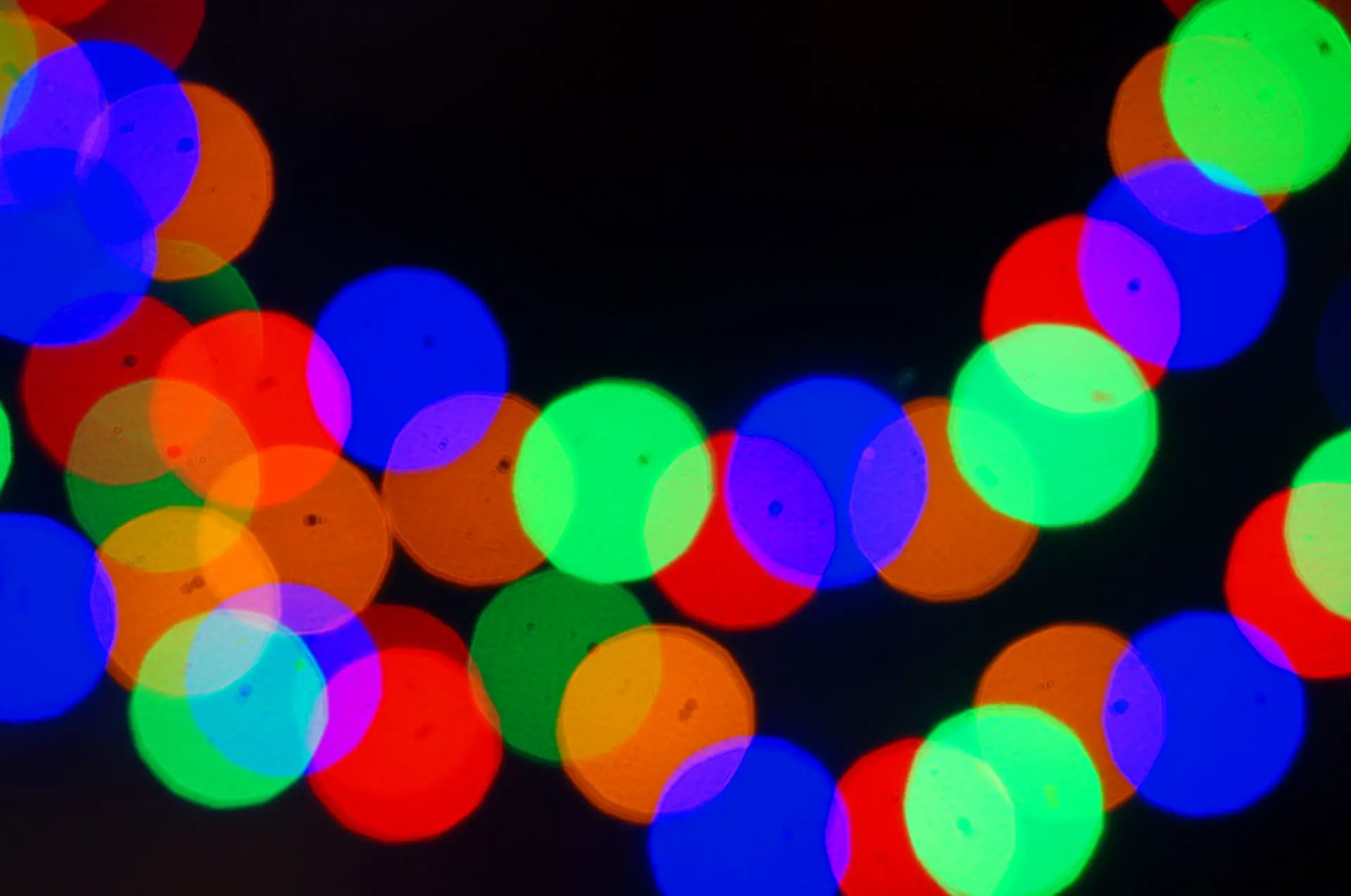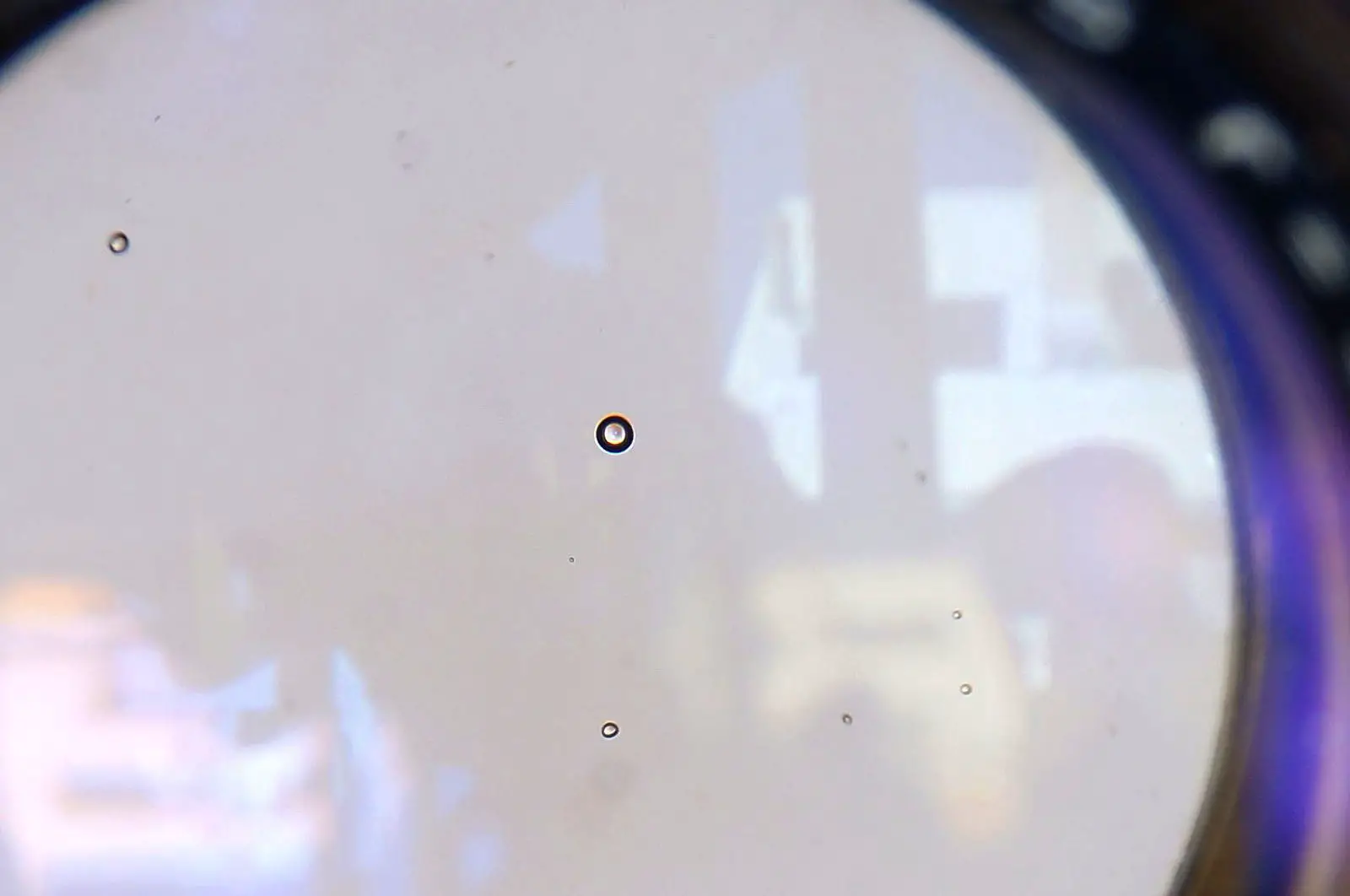Tell me something that is heavy, hard, old and almost unbreakable. Is it a stone? No, it’s a prewar Contax. I say “almost unbreakable”, as these poor specimens have seen better days. The general state of both these camera is deplorable, they are missing parts and nothing moves.
The cameras were loaned to me as a curiosity by my friend and ex-professional photographer, Enrique. Their origin is unknown, my friend received them from another professional more than 30 years ago and then they no longer worked even then. A lack of affection and use had caused them to no longer work, so he has had them as decoration in his house.

But whilst the camera’s don’t work, the lenses are only dirty. My curiosity in them caused me to discover something strange about them – whilst inspecting and attempting to clean the lenses, I saw that the 50mm f/1.5 Sonnar lens had air bubbles in the rear group of elements, so I thought I would take some photos to demonstrate how they impacted the results.
Bubbles in the Sonnar
As you can see in the image at the top, the bubbles are evident, one in particular is of “enormous” size. Currently we all seek perfection and we would not accept such a defect but there was a more tolerant or resigned time, for the photos of that time that quality was more than sufficient.

Adapting to the Sony
I could not resist the temptation to take photos with the lenses but I only have a Sony A37 camera with a “Flange focal distance” much greater than that of Contax cameras. Therefore I could only take macro photos.
For the adaptation I used a Sony plastic body cover, drilled in such a way to avoid risking scratching the fixed translucent mirror of my Sony A37 – the rear of the 5cm lens was 1mm from the mirror.

The focus is fixed since Contax cameras are equipped with a helical movement system. In the case of my adaptation, the focus is only 360mm.
As you might expect, despite the bubbles, no marks or defects can be observed in most of images.




Bubbles in the Bokeh,
Where the bubbles can be seen is in the bokeh when photos are taken that include out of focus highlights.

Here you can see a comparison of the bubbles in the lens, and the impact of them on the bokeh. On the left is a close up photo of the glass itself, and on the right is an isolated out of focus highlight that I have mirrored and rotated to show how the bubbles

Conclusion
These lenses are not an ideal match for my camera, but they did give me an opportunity to do this test and demonstrate how certain defects in old lenses do and don’t show up in the final photos. My curiosity has been satisfied, I couldn’t sleep without doing these tests. It has been fun and quite laborious. Now I have finished this article I will return the cameras to their owner and they will possibly continue as decoration for many more years…
Thank you for reading
Share this post:









Comments
Gary Harding on The Impact of Air Bubbles in the Optics of Old Lenses – By Jordi Fradera
Comment posted: 02/07/2020
James T on The Impact of Air Bubbles in the Optics of Old Lenses – By Jordi Fradera
Comment posted: 02/07/2020
Discreet(ish) objects within a lens generally have much less effect than smears and fingerprints.
Philippe on The Impact of Air Bubbles in the Optics of Old Lenses – By Jordi Fradera
Comment posted: 02/07/2020
Your post trigged my curiosity.
I have a 1937 ContaxII and a matching Sonnar.
My Sonnar was accidented (fallen I suppose) , comletely out of focus and beyond "reasonably costs" to use.
I still keep it...in case of.
My Contax had a good CLA and works well (shutter speeds are accurate (besides that 1/1000 is more 1/800)
I mounted a 1955 Russian Jupiter8.
I like the soft way (the "dégradé" in French) the lens goes from sharp to unsharp
This is a nice lens...with a few air-bubbles.
They never seemed to affect the pictures I took with it.
I'll try to make a picture in highlight, out of focus to see if I can recognise the bubbles.
With a T-Max100 I should be able to see the difference between the bubbles an the grain ;-)
When I compare this 1955 lens, a copy of the 1930-ies Zeiss lens, to my Fujinon lenses on my digital Fuji's, I can see that we "speek" an other language now.
I studied in a film school in Brussels in mid 70, before attending 3 years film we had a year photography.
3 years ago I reconnected with "half-analog" photography...developping B&W, scanning and processing with Capture One.
I re-discovered the time to take a picture when you have 36 pics on a roll (or 8 with mij Fuji 6x9)
Anyway thanks for your article
Philippe
Comment posted: 02/07/2020
Kurt Ingham on The Impact of Air Bubbles in the Optics of Old Lenses – By Jordi Fradera
Comment posted: 02/07/2020
Kurt Ingham on The Impact of Air Bubbles in the Optics of Old Lenses – By Jordi Fradera
Comment posted: 02/07/2020
BG on The Impact of Air Bubbles in the Optics of Old Lenses – By Jordi Fradera
Comment posted: 02/07/2020
Kurt Ingham on The Impact of Air Bubbles in the Optics of Old Lenses – By Jordi Fradera
Comment posted: 03/07/2020
Kurt Ingham on The Impact of Air Bubbles in the Optics of Old Lenses – By Jordi Fradera
Comment posted: 03/07/2020
I thought the first comments were an unposted draft
Martin Andersen on The Impact of Air Bubbles in the Optics of Old Lenses – By Jordi Fradera
Comment posted: 21/06/2021
There is a few bubbles in some of my lenses, but nothing that worries me or affects the images. Bokeh wasn't a thing back in the day, a mere side-effect, it's a more modern aesthetic.
Comment posted: 21/06/2021